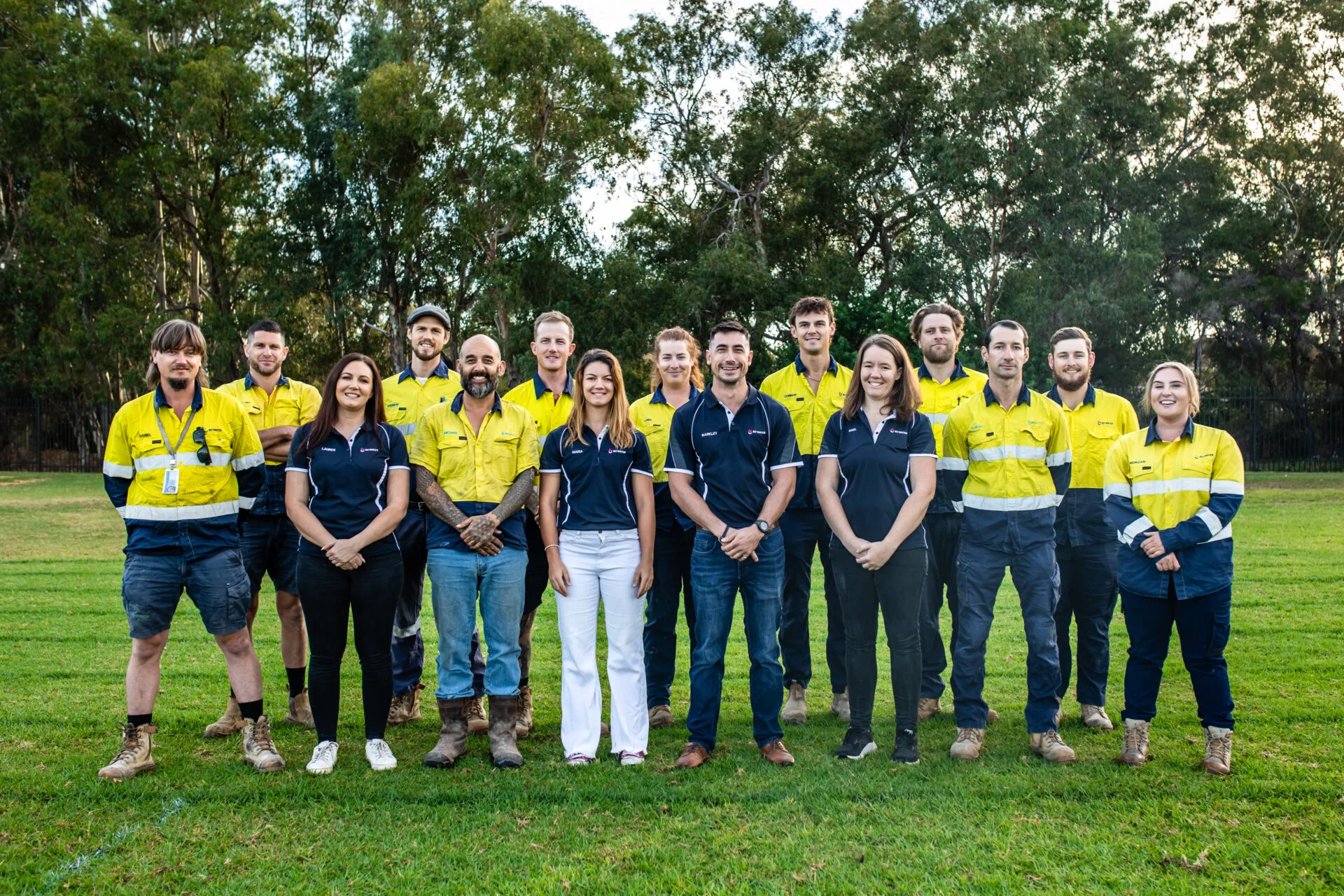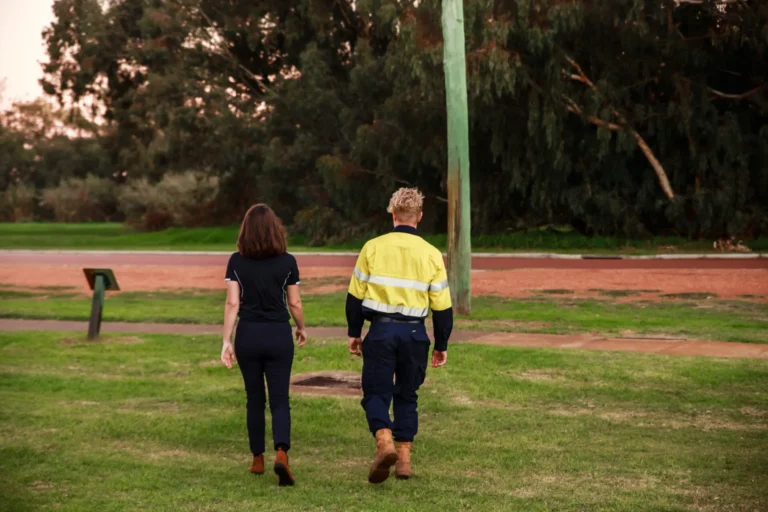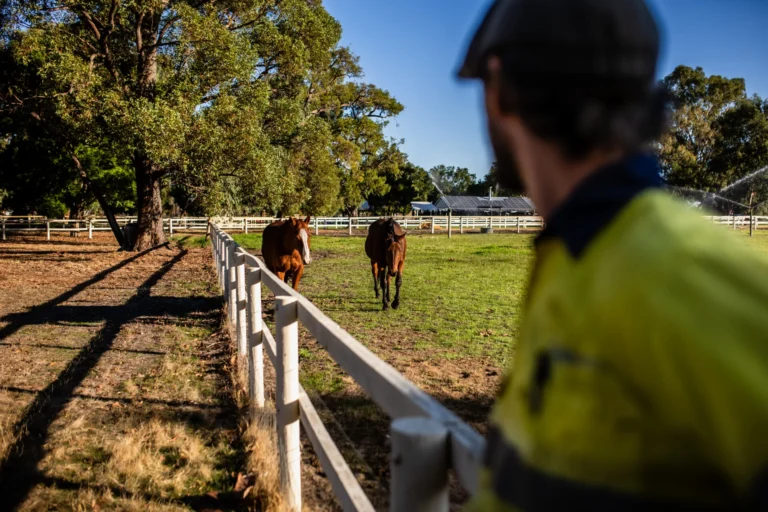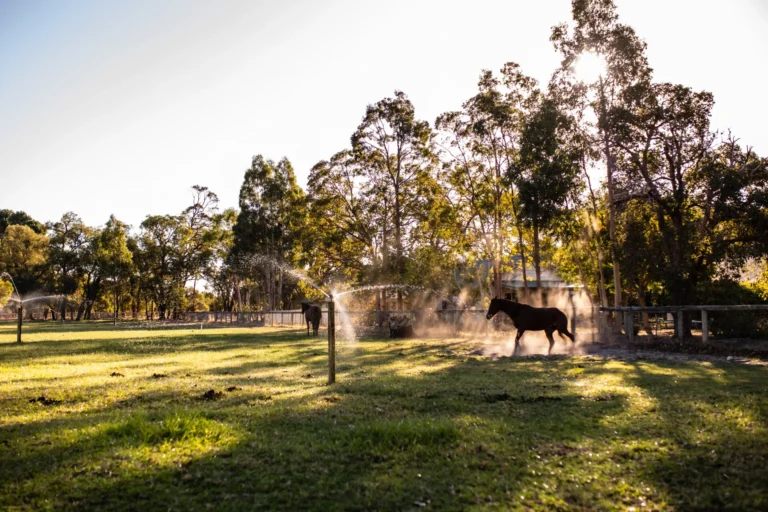When Southern River College needed a high-performance water bore solution, they weren’t just after a hole in the ground — they wanted a long-term water source that was smart, sustainable, and seriously well-built. BD Water stepped in with drill rigs, hydrogeological smarts, and a competent installation team. The result? A Leederville Aquifer 8″ Production Bore drilled to 117 metres, delivering solid performance with a splash of innovation.
Let’s take a look at how we made it happen.
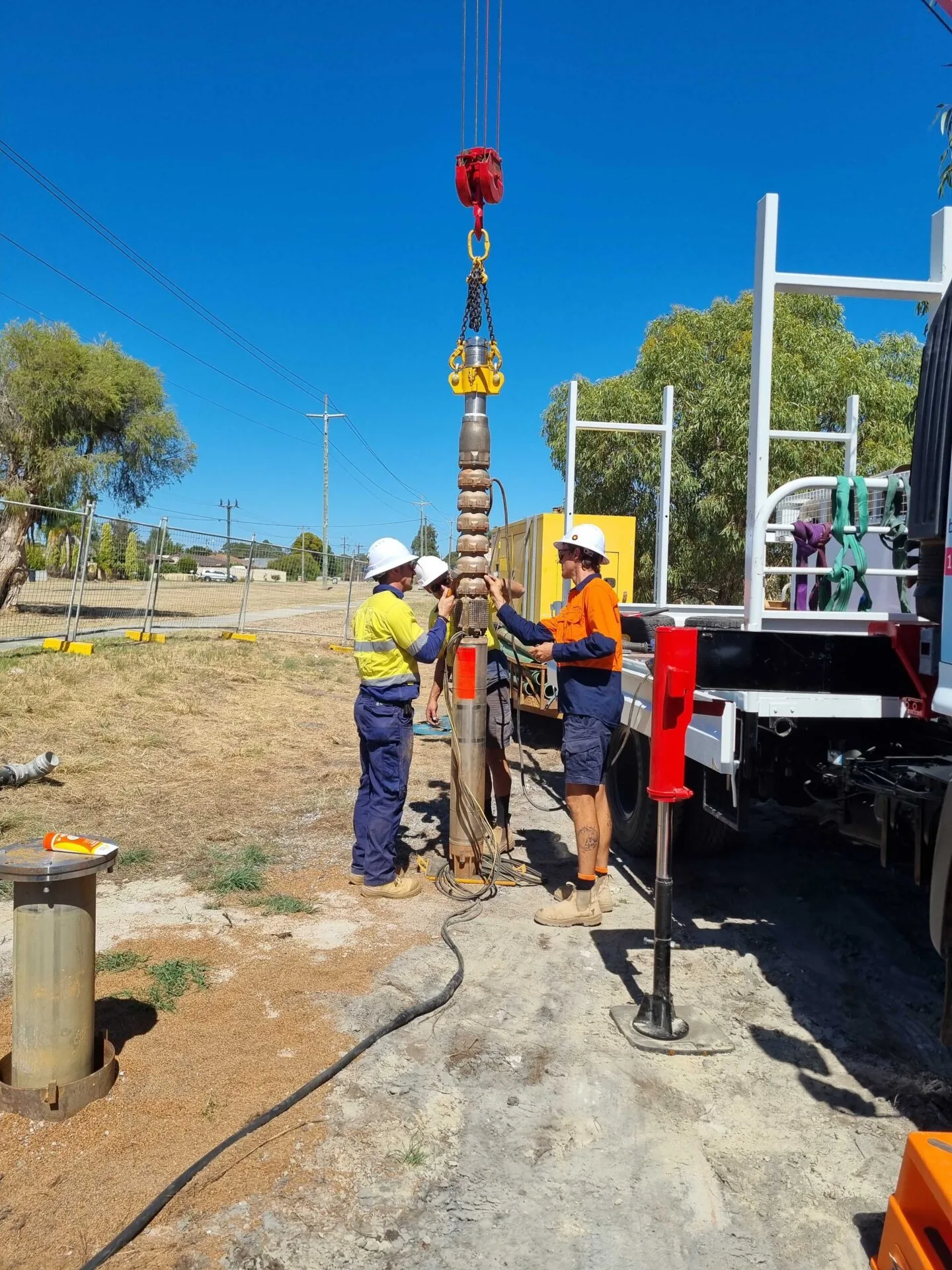
Pre-Drilling Prep: Hydrogeology First, Drilling Second
Before the drill bit even touched soil, we kicked off with a pre-drilling hydrogeological assessment. This helped us understand expected soil conditions and determine initial design recommendations for optimal water quality and performance.
One of the key findings? A thick clay layer between 118–124 metres acts as a natural barrier, preventing salinity migration — a big win for long-term water quality. While the high-yield sands from 125–154 metres offered strong water production, they posed a water quality risk. So, we prioritised a safer, more sustainable solution.
The final bore design includes casing from approximately 79 metres, a maximum depth of 115 metres, and 36 metres of stainless steel screens. Water quality is expected to be good from 70 metres onwards, with further improvement from 100 metres — a sweet spot for performance and purity.
Mobilisation, Licensing & Ground Scan
With the design locked in, we got the paperwork sorted — because compliance is always necessary. We handled the application and close-out of the 26D drilling licence, then mobilised to site with all the gear and good vibes.
A ground scan was conducted to make sure we weren’t about to drill into anything unexpected — like a rogue utility line or a buried treasure chest (no luck on that one).
Drilling Deep: Pilot Hole to Production Bore
We started with 165mm pilot drilling down to 156 metres, followed by wireline geophysical logging. This gave us a detailed look at the subsurface layers, which our hydrogeologist interpreted using LAS wireline log results to determine the optimal bore construction depth. The actual drilling samples taken at 1m intervals confirmed the findings in the hydrogeological assessment previously conducted, and we decided to construct the bore to 117 metres (consistent with the approx. 115 metres recommended by the original report).
With the data in hand, we reamed the bore to a 311 mm cavity, wide enough to accommodate the casing and allow for cement grout and gravel packing. Think of it as widening the tunnel before installing the train tracks.
Casing, Screens & Surface Works
Next came the heavy-duty bore construction: steel surface casing, cement grouting, and the installation of 8” 200NB FRP Permaglass bore casing — tough, corrosion-resistant, and built to last.
To connect the FRP to the stainless steel components, we used a FRP to S/S adaptor, ensuring a seamless transition. We then installed 36 metres of 8″ inline 168OD stainless steel screens, designed to maximise water flow while keeping out unwanted particles. These were fitted with casing centralisers to ensure perfect alignment and stability.
Once the bore was constructed, we performed air development to clean out the borehole and optimise yield. Then came demobilisation, mud-pit excavation and reinstatement, and a thorough site cleanup — because we always leave things better than we found them.
Flow & Quality Testing – Performance Confirmed
With drilling complete, we wrapped up flow and water quality testing — and the results speak for themselves:
- Maximum Performance: 30 litres per second
- Recommended Operating Rate: 20 litres per second for long-term efficiency
- Static Water Level: 6.84 metres
These results confirm the bore’s strong, sustainable yield while maintaining quality. A well-optimised water source for the school’s future needs!
Powering Up: Electrical Design & Western Power Compliance
Water without power is just a puddle. So we designed and submitted an Electrical Connection Application with Western Power, ensuring full compliance with WAER and the Western Australian Service and Installation Requirements (2023).
Power, Pressure, and Pump Perfection
We supplied and installed a Grundfos SP77-7 26kW bore pump, set at 52 metres depth and powered by 10mm² 3c+E submersible cable. This pump is a beast — efficient, reliable, and built for serious flow.
To control it all, we installed a Vacon 100 VFD cabinet with a sine wave filter, ensuring smooth operation and extended equipment life. A pressure transducer (0–16 Bar) was added for real-time monitoring and control.
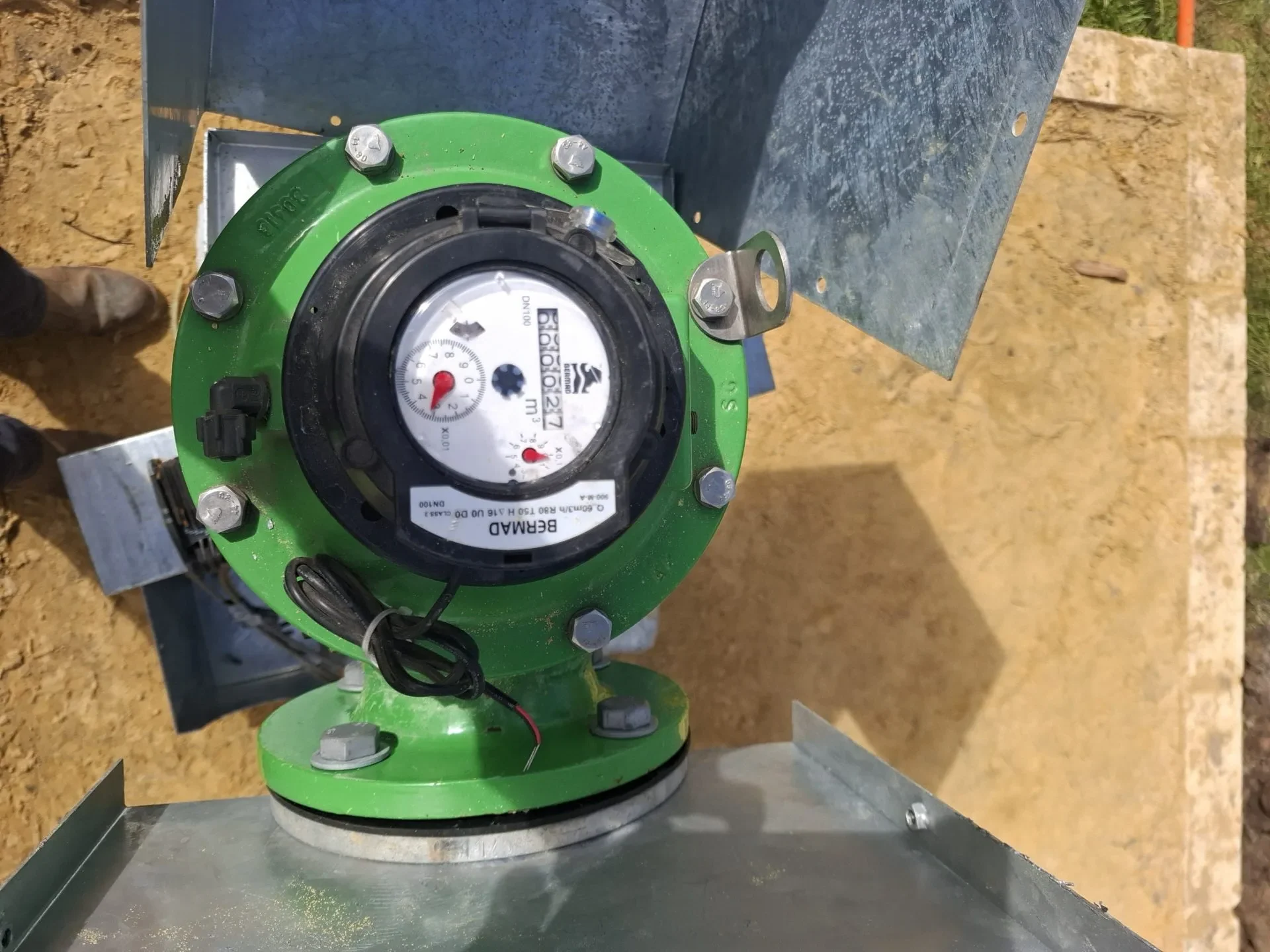
Headworks & Hydrometry: Precision Meets Practicality
The bore head discharge assembly was no afterthought. We built a concrete pad and installed a 100mm headworks setup as per the provided DWG drawing. This included:
- All fittings and valves
- A Bermad Hydrometer with pulse output
- Meter cover bolts
- Sundry components that make the whole system tick
This setup ensures accurate flow measurement and seamless integration with future irrigation systems.
Electrical Cabinet, Conduits & Future-Proofing
We didn’t just install an electrical cabinet — we future-proofed the whole system. Conduits were laid as per standard, with a few clever extras:
- A 50mm HD orange conduit heading toward the footpath side of the wall
- A 32mm MD conduit running alongside the 110mm poly pipe for a future irrigation controller
- A 110mm PN12.5 poly section, electrofusion welded under the wall, pointing in the opposite direction of the footpath
These additions make future upgrades a breeze and show our commitment to long-term value.
We wrapped up with the installation of plinths and the VFD drive cabinet, completing the electrical and mechanical integration.
The Outcome
The result? Southern River College now has a robust, high-performance water bore system that’s engineered for efficiency and built with care. From the first scan to the final bolt, BD Water delivered a solution that’s as deep as it is dependable, and will operate for years to come.
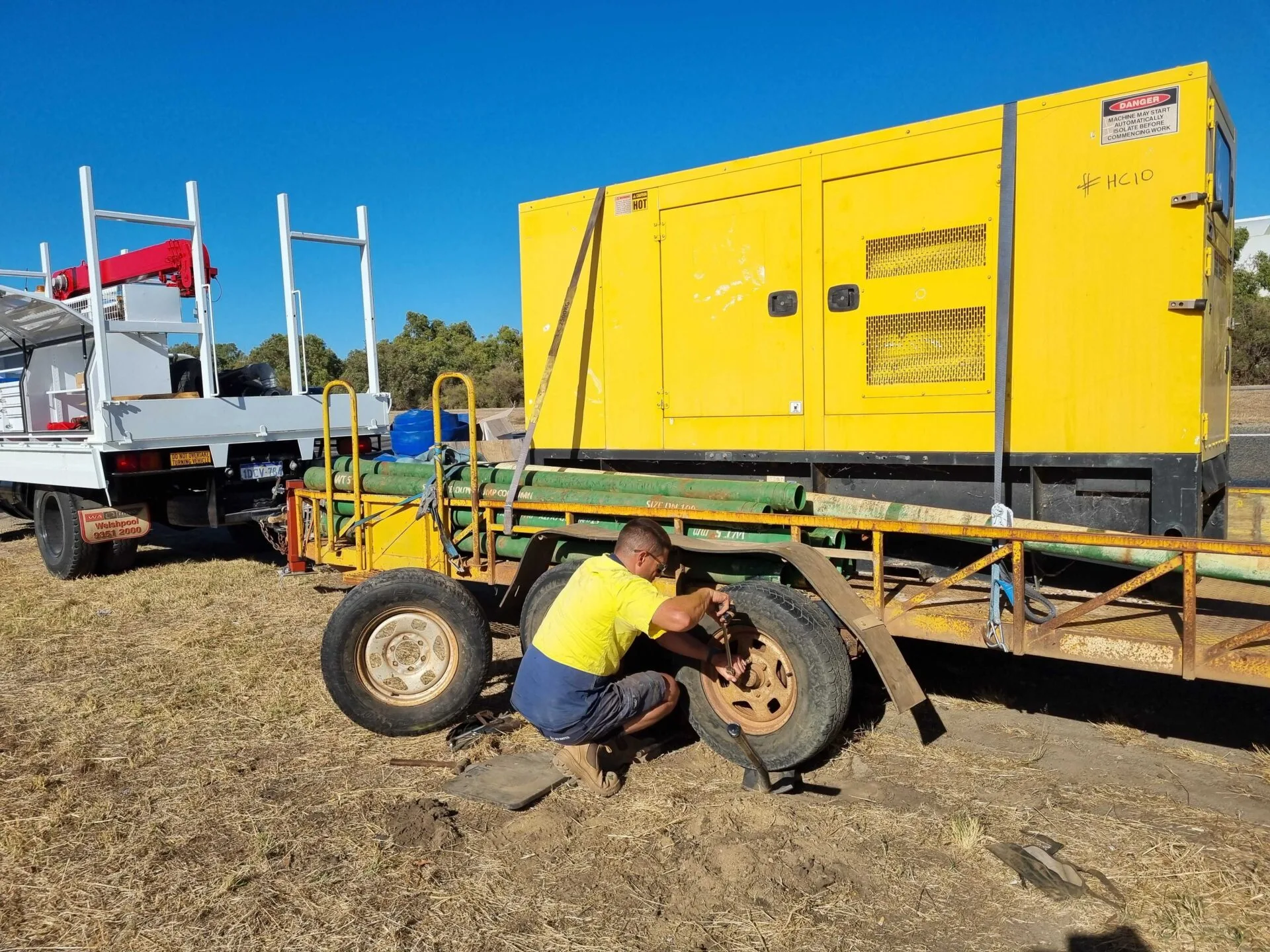
Why BD Water?
This project is a textbook example of BD Water’s approach:
- Quirky but competent: We bring personality to the job, but never at the expense of precision.
- Innovative: From hydrogeological assessments to future-proof conduit layouts, we push boundaries to provide the best possible solution.
- Solid: Our installations are built to last, with quality materials and expert craftsmanship.
- Helpful: We handle everything — licensing, drilling, electrical, testing — so our clients don’t have to.
- Personable: We’re easy to work with, and we genuinely care about delivering great outcomes.
If your site needs water infrastructure that’s smart, solid, and a little bit quirky — you know who to call.
